

Unduk-Naru ferry terminal suggests the public space for water transportation to be a hill, an open platform for people to find their own space, meaning and event, equipped with straightforward functional requirements under the hill. Rather than an iconic object with rigid programs, the architecture of Unduk-Naru focuses on the constantly changing quality of people’s waiting, viewing, playing, meeting and departing, so that the hill is the open space for people to participate in the creation of participatory public space. Inspired by Jogakbo (Korean traditional patchwork cloth), the finish material of the hill surface is fragmented by bench size modules and each pieces are supported by people. The engraved names and the meaningful participation constitute the whole as unique and dynamic harmony to form an image of 21c public space. On Unduk-Naru, architecture disappears and eventful participation emerge as the facade of ferry terminal.
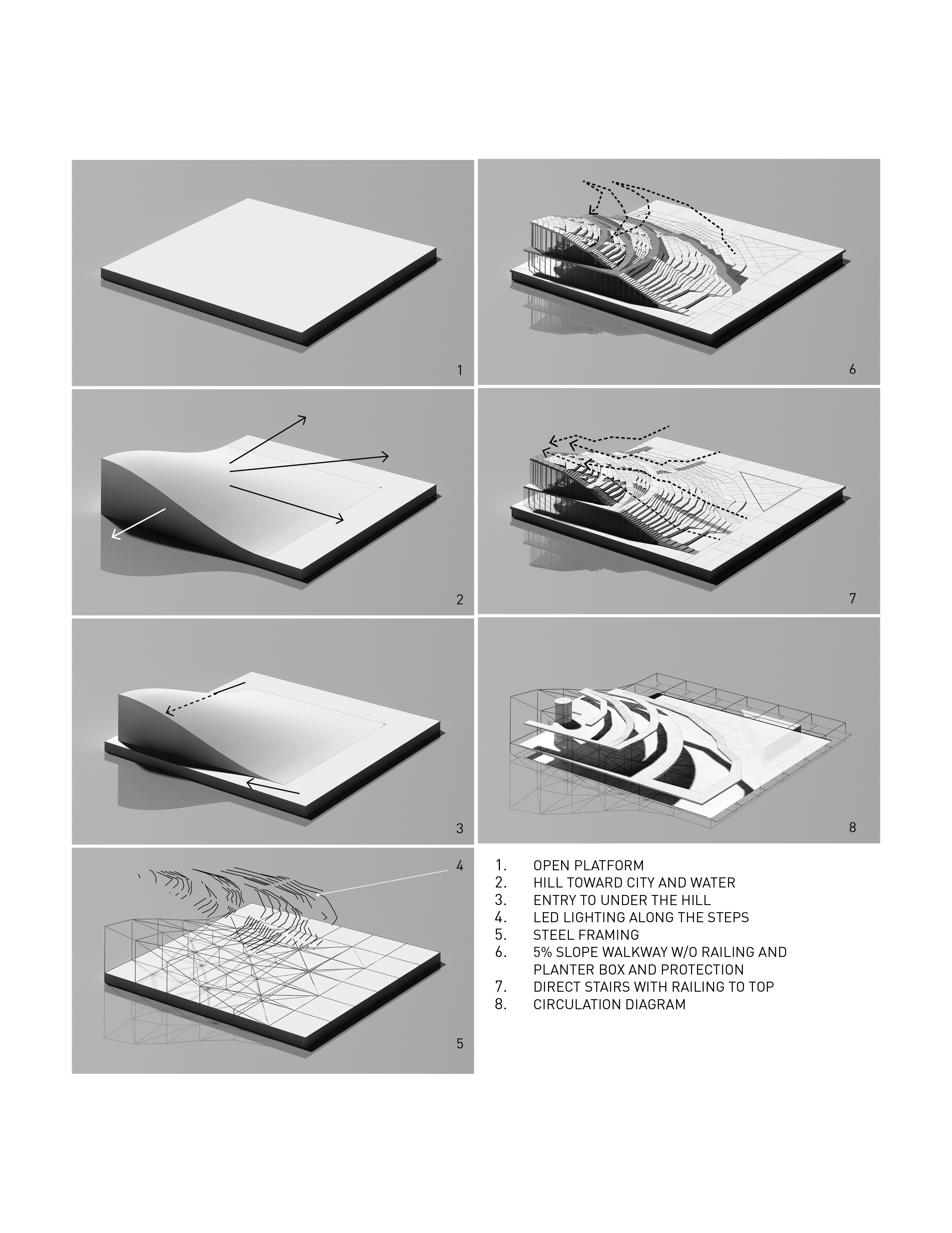
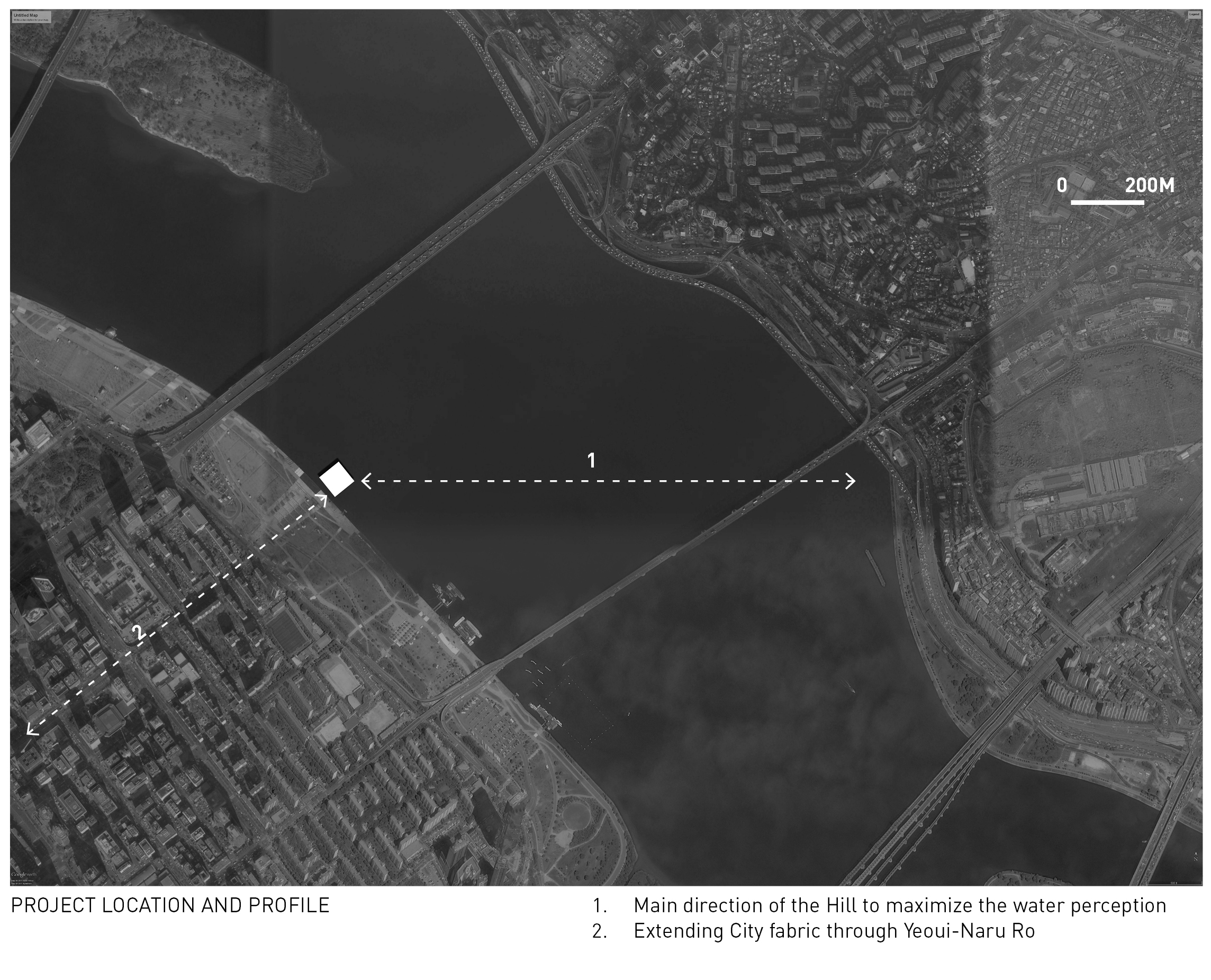

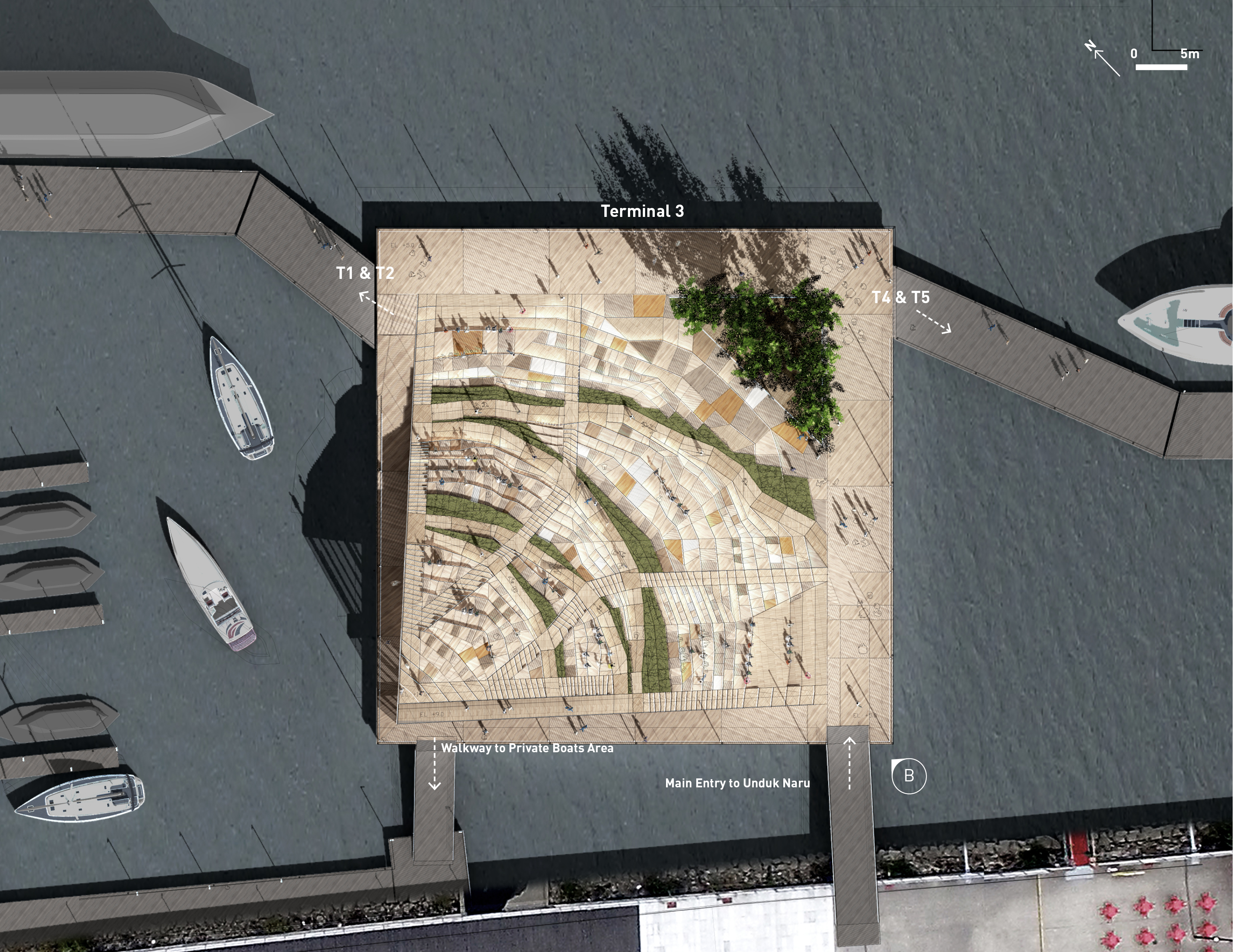

Our culture of avant garde in architecture has been a reaction to the predefined authority and traditional perception by adding differences to the city. In case of Han River and the culture of waterfront development in Seoul, we have had dominant force to add ‘iconic object’ or ‘excessive design’ hoping to express our diverse and dynamic culture of public activity. Therefore, we have been interested in adding more, to enhance the amenity, commercial activity and well-being. Architects have been in the center of this mission to guide the cultural agenda by adding differences and iconography. However, the contemporary metropolis no longer hosts singular identity. The city is already full of ‘differences’. The heterogeneous desires from people and dynamism from the public activity cannot be captured from the architectural style. Once the architecture is delivered to public, we no longer able to foresee how people will use it in what way. Therefore, the architecture of Unduk-Naru focuses on fundamentally dynamic quality such as waiting, meeting, playing, departing etc. To respond to this, as a humble gesture, we want to provide an open platform. It is a hill and trees. Architecture as physical presence must disappear and the eventful public activities should emerge as a facade of the Unduk-Naru.
The part to whole relationship in Unduk-Naru is learned from the Jogakbo, a Korean traditional wrapping cloths from Joseon Dynasty(14c-19c Korea), used to wrap, cover, or carry things in daily life. It is made with remnants of fabrics from leftover cloths by unknown people. On the contrary to the intention of ‘art works’, the colorful composition and geometry is a beautiful coincidence, the practical result of availability of left-over fabrics. Along the pathway on the hill, there are seatings and steps fragmented by different sizes and people can support each pieces. We will provide 5 or more standardized finish materials (Teak, Ipe, Ipe-stained, Composite for larger event area, Landscape planter box, walkable solar PV etc). People can select one of them, donate fund or purchase the small portion and attach their engraved names and messages. Each pieces are special to someone and the combination of these parts constitutes the whole with unique harmony. In this way, Unduk-Naru provides an opportunity for people to participate in placemaking.

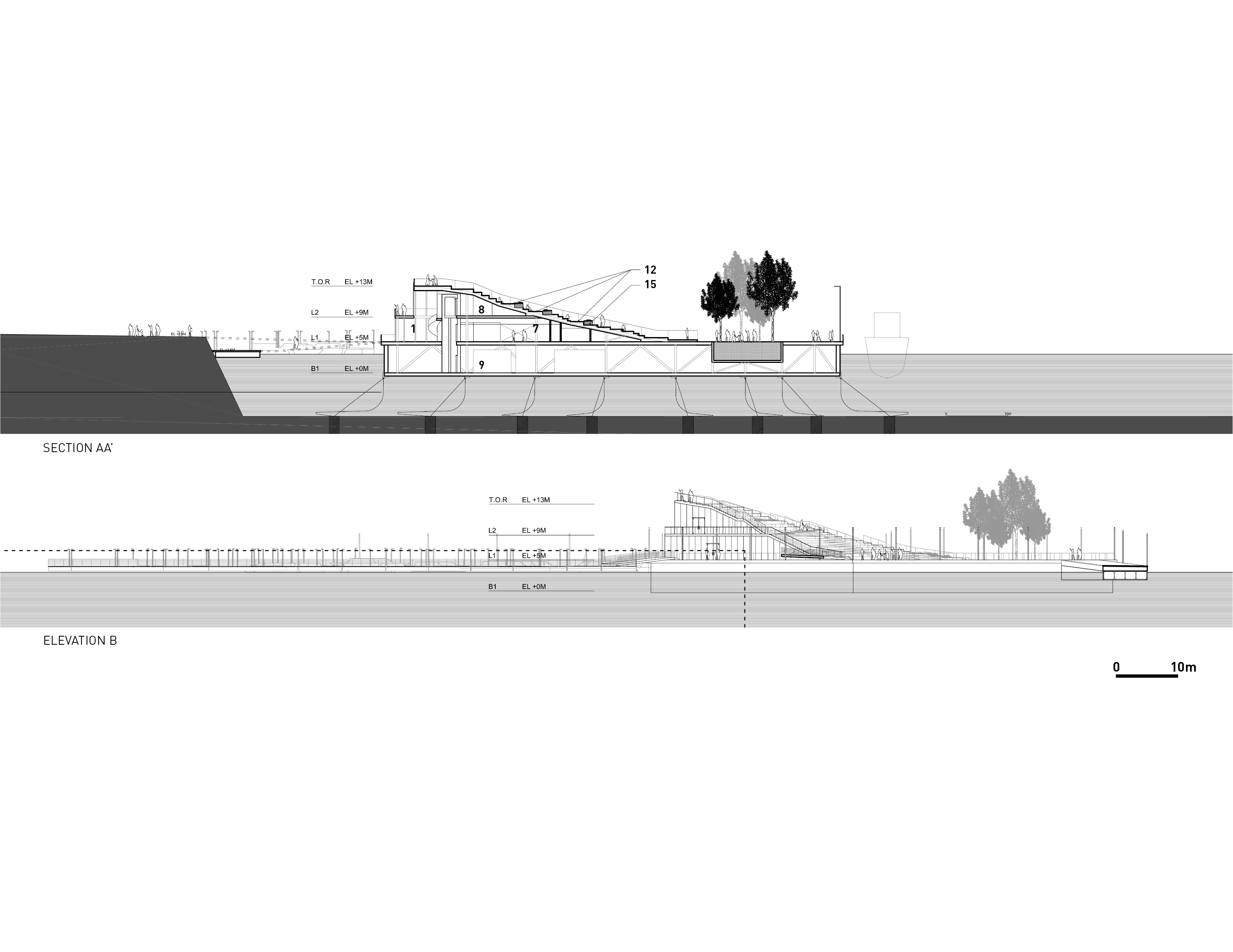

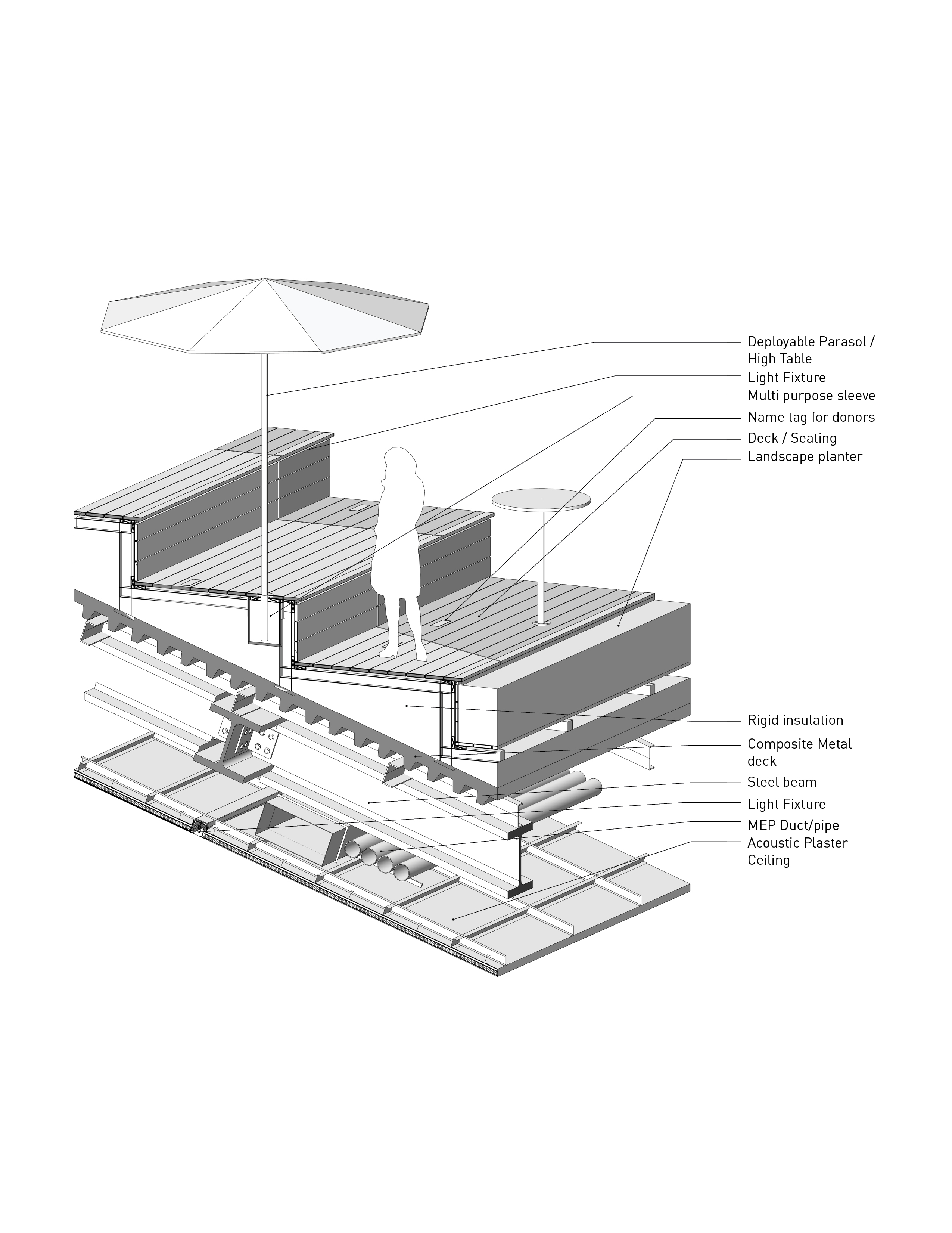
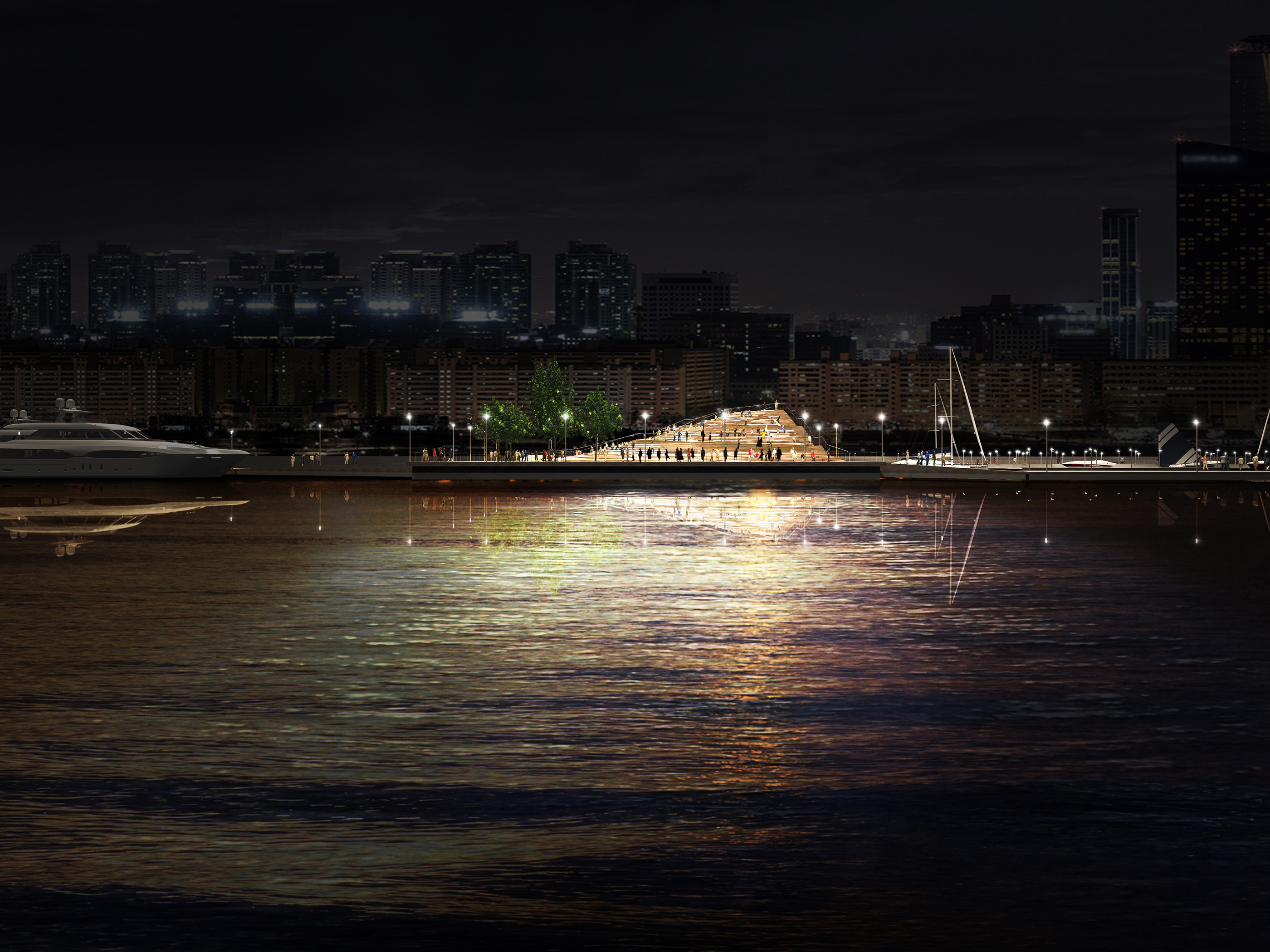

Collaborator: Youngseop Lee (Technical Architect)